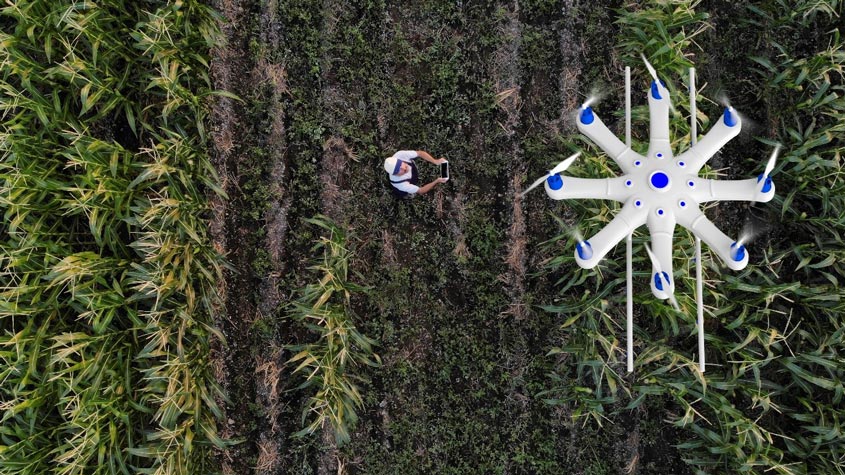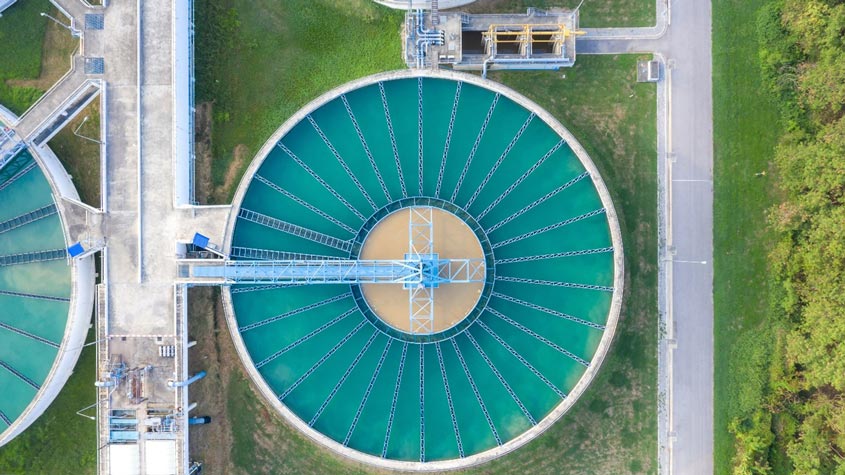

By Edward Kwakwa, Assistant Director General, Global Challenges and Partnerships Sector, and Minna Guigon-Sell, WIPO GREEN Communications Lead
People around the world have witnessed another year of widespread climate change-induced weather events. Extreme flooding, droughts and heatwaves are leaving no one unaffected, and are fast becoming the “new normal.” But all is not lost. Many innovative new solutions offer optimism, demonstrating our ability to adapt to, and mitigate, the worst effects of climate change, and transition to a low-carbon future.
Many innovative new solutions offer optimism of our ability to adapt to, and mitigate, the worst effects of climate change, and move to a low-carbon future.
The Green Technology Book, published by WIPO in late 2022, is testimony to the countless efforts being made around the world to tackle climate change. The first edition of this annual publication focuses on the technologies already available to help us adapt to the current effects of global climate change.
Showcasing more than 200 technologies, The Green Technology Book is designed to inspire and encourage people to find the solutions they need to tackle local problems. This is a crucially important part of the solution. The technologies featured draw from the WIPO GREEN database of needs and green technologies.
The Green Technology Book is designed to inspire and encourage people to find the solutions they need to tackle local problems.
When it comes to tackling climate change, there is no one-size-fits all approach, but the remedies employed need not be highly advanced to be effective. When suited to the local context and the challenges it presents, simple measures are often the best and most effective option. That is why The Green Technology Book features both advanced and very simple technologies and solutions.
Areas covered by The Green Technology Book
The Green Technology Book covers the three areas hardest hit by climate change, namely, agriculture and forestry, water and coastal regions and cities. It explores how we can live with the impact of climate change when it affects how we grow crops, rear livestock, use water, live by the sea and plan our cities.
Agriculture and forestry.
Agriculture, which is vital for food security, is an important contributor to the economy of most countries and is highly vulnerable to climate change. Agriculture is also a major emitter of greenhouse gases.
Changes in weather conditions hamper efforts to feed the world’s expanding global population. This section of The Green Technology Book explores ways to achieve food security by producing more with fewer inputs and at minimal cost to the environment. The solutions outlined range from local and Indigenous techniques to urban farming. It also explores the early warning systems needed to monitor and forecast climate impacts.

Importantly, this section demonstrates that effective technologies come in all forms. For example, in some areas, strengthening the rights of Indigenous peoples to protect and manage their land using their traditional knowledge, is proving the most cost-effective way to increase the resilience of forests. At the same time, digitization is triggering a new agricultural revolution, boosting on-farm efficiency and productivity. While global uptake remains limited, with a smartphone in every pocket, these solutions will increasingly be available to those who need them.
Water and coastal regions.
Water is essential to life on the earth. Getting water in the right amount, at the right time, is becoming ever more challenging as we see from coastal communities facing rising sea levels and an escalation in extreme weather events. Traditional solutions range from stacking sandbags to relocation. This section of The Green Technology Book explores how these measures can keep communities safe when backed up with innovations guided by advanced forecasting tools.

In other areas, water sources are scarce or polluted. Novel water-treatment technologies can enable communities to make the best use of this precious resource, even turning seawater into drinking water, using methods that are less energy intensive than conventional desalinization techniques. Where communities face floods followed by drought, there are technologies that can direct floodwater into underground aquifers for use during dry periods. Other approaches involve using natural wetlands to buffer the flood risk in certain areas.
Similarly, the increasing acidity and warming of our oceans requires innovative approaches to conserve marine ecosystems. Technology alone cannot address the challenges associated with the degradation of the ocean environment and marine life, but it can help protect local ecosystems, for example, through artificial reefs and coral gardening.
Cities.
Over half of the world’s population lives in cities, which are often hit hard by extreme weather events. While easy low-tech solutions such as fans, insulation and shading can offer some relief against high and ever-increasing temperatures, they fall short during periods of extreme weather events induced by climate change.

Thankfully, as outlined in the third section of The Green Technology Book, many solutions are available. These include rainwater harvesting, early warning systems to alert residents to flooding, and the use of sensors and Internet of Things technologies combined with energy-efficient cooling systems to enable smart temperature regulation in buildings. Natural solutions, such as the use of trees, are also important. Trees offer multiple benefits: they are cooling, provide shade and stabilize soil structures, which can prevent mudslides.
What does intellectual property have to do with it?
Innovators by their nature think outside the box. And today, in the face of pressing climate change-related challenges, we need to support inventors and innovative thinking so more people come up with the solutions we need.
Today, in the face of pressing climate change-related challenges, we need to support inventors and innovative thinking so more people come up with the solutions we need.
Intellectual property (IP) rights like patents are designed to encourage inventors to come up with new ground-breaking solutions by recognizing and rewarding them for their efforts. Protecting a technology with a patent, or as a trade secret, is an important first step towards recognition, market access, and economic gain.
In filing for patent protection, an applicant is required to outline details of the technology in their patent application. This enables patent examiners to determine whether their technology is truly novel, useful and applicable and merits patent protection. These patent documents are a rich source of publicly available technological information for businesses in all sectors.
Which countries are developing climate change-adaptation technologies?
Interestingly, the WIPO Global Innovation Index (GII) indicates that most climate-change adaptation technologies are created in high-income countries, whereas lower-income countries have the greater need for them.
While innovators in low-income countries have developed many ingenious adaptation technologies, they rarely find their way to the global marketplace. Hence the need for countries to establish effective innovation ecosystems – supported by a robust intellectual property regime – that foster innovation, to support its journey to market and ensure it gets into the hands of those who need it.
Many adaptation technologies are patented in just a handful of countries. Very few are transferred to low-income economies.
While technology transfer can be complex and challenging, IP rights can facilitate that process [and] clarify issues of ownership, strengthen the negotiating position of inventors and help attract investment partners and financing.
While technology transfer can be complex and challenging, IP rights can facilitate that process. For example, IP rights clarify issues of ownership, strengthen the negotiating position of inventors and help attract investment partners and financing. Technology transfer may also take place through other means, for example from universities to companies. However, keeping track of these transactions is a challenge and makes it difficult to determine whether innovative adaptation technologies actually reach the communities that need them the most.
Policy action
Climate-change adaptation underpins national and international development work and cooperation. It requires a commitment to secure the resources needed to respond to climate-change challenges. It also involves a drive to make communities more robust and resourceful so they can tackle these challenges on their own terms.
All countries stand to benefit individually and collectively from continuing to invest in the development of their national innovation ecosystems. However, when supporting innovation for climate change adaptation, the local context needs to be front and center.
Finance
Securing finance to fund the implementation of eco-friendly solutions is a constant challenge. In most low-income countries, the greatest need for finance is arguably within the agricultural sector. Why? Because agriculture is crucial for food security and is often the economic mainstay of these countries, yet it is the most vulnerable to climate change.
Securing finance to fund the implementation of eco-friendly solutions is a constant challenge.
At present, the bulk of financial resources are invested in climate-change mitigation. While there are signs that this is changing as the impact of climate change becomes increasingly evident, there is still a huge need to pump resources into climate-change adaptation.
Key takeaways from the Green Technology Book
The world has always found ways to live and adapt to extreme weather events and harsh climates. Today, however, we face an entirely new, human-made reality where adaptation may not always be possible. While technology is no silver bullet, human ingenuity, and our ability to overcome challenges, as seen from the various solutions that currently exist, offer scope for optimism. Where there are ideas and innovation, there is hope.
Where there are ideas and innovation, there is hope.
The Green Technology Book, will enable you to find out what you can do today to help overcome these challenges. It demonstrates that there are solutions that everyone can use to tackle climate change-related challenges. Its aim is to inspire people to share these technologies as widely as possible, and to empower individuals, businesses, and governments to be part of the solution.
The Green Technology Book 2023
The 2023 edition of The Green Technology Book to be launched at the UNFCCC COP 28 in the United Arab Emirates in December 2023, will focus on climate change-mitigation technologies.
WIPO GREEN is currently looking for technologies to feature in this edition – if you have an innovation that you would like us to consider for The Green Technology Book 2023 – please upload it to the WIPO GREEN database.
We are also collecting adaptation technologies to add to the database. Uploading technologies to the WIPO GREEN database is free of charge. All featured technologies are available for searching and matchmaking.
- SEO Powered Content & PR Distribution. Get Amplified Today.
- PlatoData.Network Vertical Generative Ai. Empower Yourself. Access Here.
- PlatoAiStream. Web3 Intelligence. Knowledge Amplified. Access Here.
- PlatoESG. Carbon, CleanTech, Energy, Environment, Solar, Waste Management. Access Here.
- PlatoHealth. Biotech and Clinical Trials Intelligence. Access Here.
- Source: https://www.wipo.int/wipo_magazine/en/2023/03/article_0010.html



